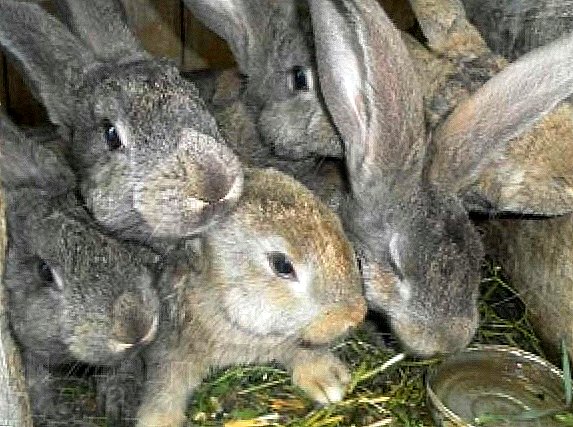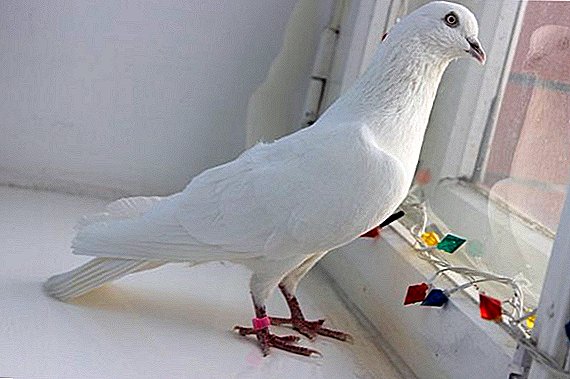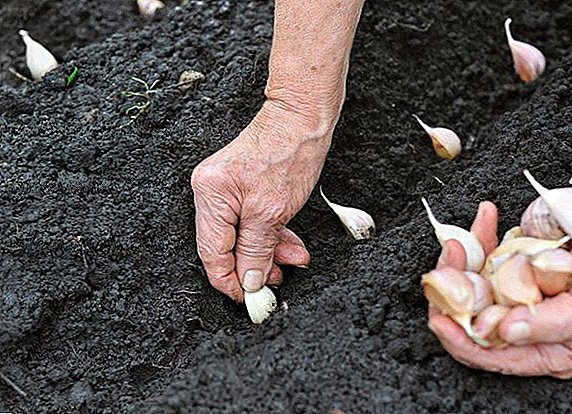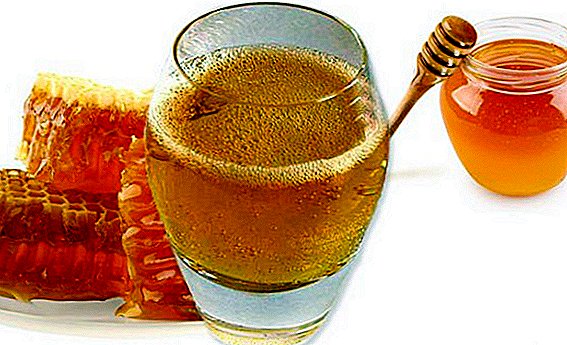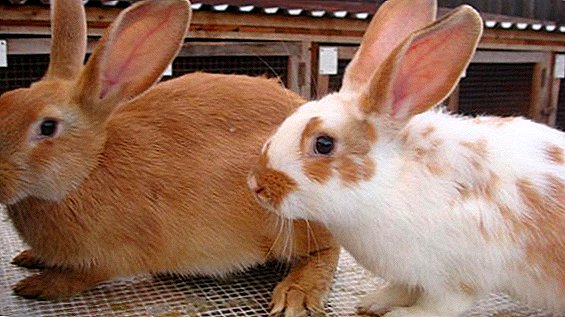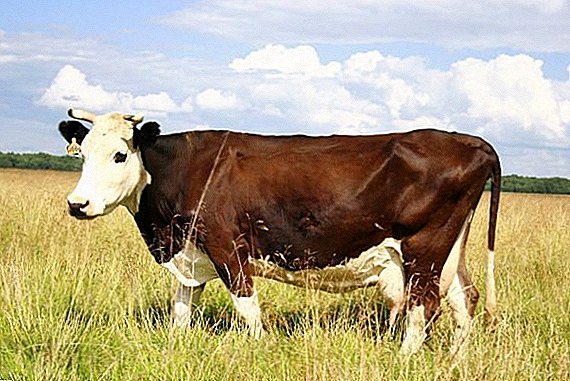 Breeding cattle can bring to the farmer a double benefit: meat and milk. To obtain meat and dairy products, it is enough to choose a breed that is equally highly productive in both directions. Today we will talk about the Kostroma breed of cows.
Breeding cattle can bring to the farmer a double benefit: meat and milk. To obtain meat and dairy products, it is enough to choose a breed that is equally highly productive in both directions. Today we will talk about the Kostroma breed of cows.
Breed history and description
The breed is quite young, its history does not even amount to one hundred years. However, animal productivity is consistently high in large farms and in small private farms. 
Selection work
The purpose of the breeders was to create a productive dairy cow, for which an entire state farm was created in the Kostroma region. The following breeds were taken as parents:
- Babayevskaya;
- Miskas;
- Schwycka;
- Alguz.
Did you know? The longest horniest cows - Texas Longhorns. Each horn of an adult can be up to two meters long.
External features
Kostroma cows have remarkable appearance:
- height (adult individuals at withers): an average of 130 cm;
- average weight: calves 800 kg, bulls 1000 kg;
- body type: wide bones and developed muscle mass;
- head: elongated with a narrow forehead, on a strong long neck;
- horns: symmetrical, also symmetrically located on the sides of the ears;
- eyes: large, dark color;
- chest: wide and developed, as well as dewlap;
- back: wide, has a flat line with a small knoll in the area of the withers, the lumbar region is straight;
- udder: large, convex, shaped like a deep bowl;
- limbs: equal, length is proportional to the body;
- suit: all options are brown tint.

Performance Indicators
Kostroma cows have high productivity characteristics:
- milk yield - an average of 5,000 liters;
- milk quality - fat content 3.9%, protein content 3.5%, sugar 5.1%;
- milk tastes sweet;
- meat - medium fat;
- carcass weight at slaughter age - an average of 900 kg;
- meat yield - on average 65%, with a special diet of 80%.
Daily weight gain calves:
- up to half a year - 800-900 g;
- 6-12 months - 750-800 g;
- up to 18 months - 650-700 g.
Did you know? The color of the Scottish cows Galloway resembles Oreo chocolate cookies. From the tip of the nose and a little further behind the shoulder blades, as well as from the tip of the tail to the lumbar, the coat is black, and a white stripe runs along the center of the body, as if painted with a wide brush.
Advantages and disadvantages
Breed Benefits:
- resilient offspring;
- strong immunity;
- quick weight gain;
- easily adapts to any climate;
- high productivity.
Disadvantages:
- high feed costs;
- possible allergies to some products;
- cows get used to serving by the hour; if the schedule is not followed, the milk yield may fall.

Maintenance and care
Not only the health of the cows, but also the quality and quantity of milk yield depends on the conditions of housing.
Summer walking ground
These cows definitely need movement, at least three hours a day. Summer walking, in addition, will provide more and saturation of green fodder, as well as exposure to ultraviolet, which helps produce vitamin D. The lack of this vitamin is especially dangerous for calves, because it provokes rickets.
If there is no pasture near the farm, there should be a platform with feeders set up there, filled with green fodder and silage. The site must be equipped with a shed to protect it from intense heat so that the animals are not affected by heatstroke. 
Arrangement of the barn
The length of the stall must be at least two meters; if the content is tethered, then the leash should not constrain the movement of the animal. The floor is covered with a deep (up to 30 cm) layer of straw with peat, and a channel for the waste of vital activity flows through it.
Trough hang at 70 cm from the floor. Wood is preferable: wood will last longer, besides it is a natural material. For hay and roughage make separate containers. A drinking bowl is also required (preferably automatic), the crane is placed centrally between the two stalls. In winter, it provides heating water.
Familiarize yourself with such breeds of dairy and meat cows as: shorthorn, Caucasian brown and Sychevsk.
Conditions of detention
In a cold room, the milk will be fat, but it will be small. In hot conditions, milk yield will be pleased with the amount, but the fat content and taste will suffer. Therefore, it is important to know and observe the golden mean.  First of all, it is necessary to exclude drafts - for this, all the existing cracks are caulked in the room. Since this breed is not recommended to be kept in greenhouse conditions, heating is necessary in winter only in conditions of severe frosts. A deep layer of bedding is required. In general, it is not desirable that the temperature inside falls below 5 ° C.
First of all, it is necessary to exclude drafts - for this, all the existing cracks are caulked in the room. Since this breed is not recommended to be kept in greenhouse conditions, heating is necessary in winter only in conditions of severe frosts. A deep layer of bedding is required. In general, it is not desirable that the temperature inside falls below 5 ° C.
Important! To temper the calf, his are walking as long as possible, almost to the first frost.
These cows do not like heat; When arranging a barn, it is advisable to think of wide and large windows for cool inflow and access of fresh air in summer. They will serve as a source of daylight. In the winter day light prolonged with lamps. It is not recommended to open the windows for the winter - a ventilation system is needed to remove the stale air and saturate the barn with fresh oxygen.
Cleaning the barn
Litter change as often as possible, as pollution. A ditch for drainage of stool is cleaned daily and the floor is washed with water to remove odor. Disinfect the room once a week using special disinfecting solutions. Once a month, they clean the ventilation system so that dust does not accumulate, collecting various bacteria. Tanks for food and drinkers wash as contaminated. 
Feeding ration
It should be borne in mind that winter meals have some differences from the summer diet.
Summer walking in the pasture
Herd grazing is driven out after the dew subsides. Animals need to be fed, because in the green there are more vitamins than proteins and sugar, which are also necessary for good nutrition. Adult cows per day should eat up to 20 kg of juicy and about 6 kg of concentrated feed.
Important! Belen, hemlock, dope, gorchak pink, St. John's wort, buttercups - these plants are poisonous to cattle. Before grazing, make sure they are absent on pasture.
Differences in winter feeding
In winter, there is no green fodder, therefore the basis of the compound feed, silage, vegetables and root crops. Compound feed is prepared on the basis of grain crops - wheat, barley, oats, also contributing mineral and vitamin supplements. In small farms, the cost of purchased feed can be reduced by garden crops, bran and derti - for example, corn. 
It is also useful for burenkas to give ground vegetables and root vegetables:
- sugar beets;
- pumpkin;
- potatoes;
- carrot.
Keeping the Kostroma cow requires attention - animals quickly get used to eating, walking and relaxing at a certain time. But these efforts will be rewarded. Compliance with the regime, as well as attentive care and ensuring the necessary conditions will have a beneficial effect on productivity.



